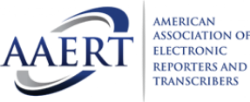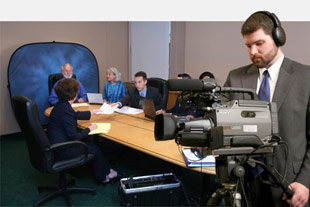How Legal Videography Helps in Preserving Vital Evidence for Litigation
How Legal Videography Helps in Preserving Vital Evidence for Litigation
Blog Article
Why Legal Videography Is Critical for Accurate Court Recordings
The role of legal videography in court settings can not be overemphasized, as it acts as an essential tool for protecting the honesty of court records. By capturing both verbal and non-verbal interaction, it improves the quality of witness testaments and shows the nuances of court room communications. This thorough documentation not just aids in minimizing prospective misconceptions but likewise sustains appellate testimonials, therefore reinforcing the judicial procedure. The implications of integrating legal videography into basic courtroom methods elevate crucial inquiries concerning its wider influence on the legal system. What might these implications require?
Significance of Visual Evidence
In the world of lawful proceedings, the relevance of visual proof can not be overemphasized. Visual proof functions as a powerful tool in developing facts, supporting testaments, and enhancing the overall clearness of an instance. This kind of evidence, that includes photographs, videos, and representations, can supply a substantial context that verbal descriptions frequently do not have, thus providing juries and judges a more clear understanding of the circumstances surrounding a case.
Additionally, aesthetic proof aids in the retention of information. Human cognition is inherently aesthetic, and people are most likely to keep in mind and understand details presented in a visual format. In the court, this can be essential, as compelling aesthetic evidence can guide point of views and strengthen the story offered by legal agents.
Additionally, using aesthetic proof can lessen misconceptions and uncertainties that frequently develop from spoken exchanges. By supplying a straight depiction of events, visual evidence assists to get rid of subjective analyses and promotes a much more unbiased evaluation of the realities. The integration of visual evidence right into legal proceedings not only reinforces the integrity of the judicial procedure however also improves the chance of attaining a simply end result.
Capturing Non-Verbal Cues
Making use of advanced videography methods can substantially improve the capture of non-verbal cues during legal procedures. Non-verbal communication, including faces, body movement, and eye get in touch with, plays an essential role in communicating feelings and intentions that might not be clearly specified in spoken testimony. legal videography. Legal videography employs high-def video cameras and calculated angles to make certain that these subtle hints are recorded with clearness and precision
The ability to examine non-verbal habits can provide useful context to statements made during court sessions. As an example, a witness's reluctance or confidence can be interpreted via their pose or gestures, potentially influencing the court's assumption of trustworthiness. The usage of close-up shots can aid focus on a speaker's expressions, enabling for a much more nuanced understanding of the testimony.
Additionally, incorporating several camera angles can develop a thorough view of interactions, highlighting characteristics in between events entailed. This diverse strategy not just enhances the precision of the court document however also help in maintaining the integrity of the judicial procedure - legal videography. Ultimately, catching non-verbal signs through lawful videography fosters a richer, a lot more full representation of courtroom procedures

Enhancing Testament Dependability
The reliability of testimony can be considerably strengthened via the my website usage of high-quality lawful videography. Video recordings act as an objective medium that catches not just the talked words of witnesses yet additionally the nuances of their distribution, consisting of tone, pacing, and emotional expressiveness. This multifaceted documents gives a clearer understanding of the witness's reputation and intentions, which can be crucial in legal process.
In addition, legal videography decreases the possibility for misinterpretations that might arise from written records alone. When jurors can observe a witness's attitude and body language combined with their testament, they are better equipped to assess the authenticity and reliability of the evidence offered. This aesthetic context can reinforce the testimonial story, making it more compelling and credible.
Additionally, the presence of a video clip recording can deter possible variances in testimony. Witnesses might be a lot more careful in their declarations when they recognize they are being videotaped, resulting in more accurate and genuine accounts. Overall, high-quality lawful videography enhances the stability of testament, making sure that the court has access to a total and honest representation of the facts as conveyed by the witnesses.
Sustaining Appeals and Reviews
Lawful videography plays a critical duty in sustaining allures and reviews by giving an extensive aesthetic document of court procedures. This visual documents records not just the talked words of witnesses and lawyers however likewise the nuances of body movement, tone of voice, and court room characteristics. Such components can be essential in recognizing the context of testimonies and arguments presented.
In the appellate process, where the focus gets on errors of regulation and procedural fairness, a video clip document can function as a vital tool for appellate courts. It makes it possible for courts to assess the original test context, making sure that decisions are based on a total understanding of the procedures. The capacity to aesthetically analyze the attitude of witnesses or the interactions this post in between parties can reveal insights that created transcripts might forget.

Furthermore, lawful videography can help in making clear obscurities in testaments or procedural judgments, thereby reinforcing the basis for an appeal. By using a dependable, objective account of what transpired in court, legal videography not just sustains the honesty of the lawful procedure but also encourages all parties involved to make informed choices concerning their instances.
Simplifying Courtroom Processes
Enhancing court room effectiveness, lawful videography streamlines procedures by giving immediate access to visual documents of process. This technology permits judges, attorneys, and courts to take another look at vital statement and proof, guaranteeing that all parties have a clear understanding of the case. By catching the nuances of spoken and non-verbal communication, videography enriches the document, making it simpler to understand the context and weight of testaments.

Additionally, video clip recordings can help with remote engagement in hearings, enabling greater versatility in scheduling and engagement, which is particularly valuable in complicated instances entailing numerous stakeholders.
Final Thought
To conclude, legal videography plays an important duty in making sure precise court recordings by providing essential visual proof that records both spoken and non-verbal interaction. This technique boosts the dependability of testaments, sustains appellate evaluations, and enhances courtroom processes. By promoting an extensive understanding of court dynamics, lawful videography ultimately adds to extra equitable judicial outcomes, strengthening the site web stability of the legal system and assisting in educated decision-making.
Report this page